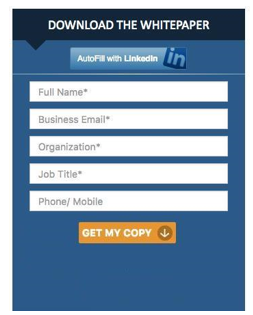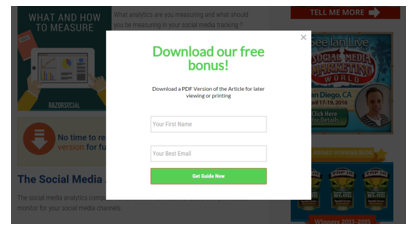
SUMMARY
Here are the 10 growth hacking tips around SEO, Content, Conversion optimization, Social media, video marketing and more, which can enable you to kick-start your growth machine.
Generating traffic to your website or for your app by spending huge amounts of money is often not sustainable. Expensive initiatives often generate a one-time increase in the metrics which is temporary and phases out with time.
The real challenge is to achieve consistent and sustainable growth which cannot be achieved using paid media push alone.
Today, the real need is to discover and perfect techniques which enable consistent customer acquisition and help in retaining those customers frugally. And, that is what growth hacking enables. This self-powered virtual machine is more of a mindset which helps in achieving growth by leveraging growth hacking techniques.
Often, marketers refer to multiple sources to learn the nuances of growth hacking techniques. While those sources can be a good starting point for theoretical learning but the real learning comes when marketers start practicing the growth hacking techniques themselves.
During the process of implementation, they often end up discovering and inventing many hacks basis experimentation.
Growth-hacking is more of a mindset than a toolkit.
Here are the 10 growth hacking tips (in no particular order) which can enable you to kick-start your growth machine. We have tried to touch all aspects of digital marketing like SEO, Content, Conversion optimization, Social media, video marketing and more:
Retaining customers
As per marketing metrics, the probability of selling to an existing customer is 60 – 70% and the probability of selling to a new prospect is 5-20%. This demonstrates the importance of retaining the existing customers. And, in case your existing customers have already made their mind to abort your service then you should not give up.
Instead, you should define a retention workflow which should be triggered when the user clicks the subscription cancellation. It can be as simple as capturing the reason of cancellation and then offering personalised offers against the respective cancellation reason.
For example, if the customer mentions that price is the main reason to abort the service then marketers can offer 10% discount for the next 12 months’ subscription. While this approach can be effective but do not start offering hefty discounts as the word gets around more and more customers will start following this route to reduce their monthly billing subscription.
Leverage high quality and consistent content to build trust
Imagine a marketer is running a banner campaign offering a 40 per cent discount on laptops for a limited period. This is an appealing offer that will invoke the buyer’s interest. The buyer clicks the banner and lands on the website. To the buyer’s surprise, the discount offered on the website is 17% instead of the 40 per cent mentioned on the banner.
This inconsistent content will invoke distrust in the buyer. The next natural response from the buyer will be to leave the website without even exploring the other offers on it. This is because the buyer feels cheated and does not trust the website any more. The problem happened as the ‘scent’ presented in the ad got lost when the buyer landed on the web page.
The situation would have been different if the marketer had used conversion optimization techniques while writing the content and creating the landing page. Carrying the same ‘scent’ on the landing page as on an ad is one of the basic requirements to acquire customers.
Most websites do not have a traffic problem. However, almost every website has a conversion issue. The basic problem of conversion optimization can be solved by maintaining the continuity or by keeping the promise.
Keeping the promise can be as simple as giving a similar look to your banner ad and the landing page.
Optimise your 404 page
The 404 page is shown when an incorrect URL is entered in the web browser or if an existing webpage has been deleted without proper redirection. 404s are frustrating.
When I land on one, I get confused, especially if there’s nothing to help me find what I’m looking for. Ninety per cent of the time, the next user action after landing on a 404 page is to quit the website. But 404s can be redesigned and configured to give other important information to the visitors. They offer a great way to recover otherwise lost traffic.
Designing an effective 404 page can help users find what they are looking for, which will be helpful in retaining the traffic and for SEO. You may shortlist a list of relevant links, which can display the relevant information to the visitor. This is also great for internal keywords-linking without spamming.
Define the martech stack for your organisation
While startups focus a lot on technology but in the quest to acquire the latest technology, the organisation lose the track of defining an effective marketing technology stack often known as the martech stack.
As per Marchtechtoday.com, “Martech is the blending of marketing and technology. Virtually anyone involved with digital marketing is dealing with martech, since digital by its very nature is technologically-based. The term “martech” especially applies to major initiatives, efforts and tools that harness technology to achieve marketing goals and objectives”.
The common mistake is focusing too much on acquiring the technology for generating leads and ignoring the other aspects of customer lifecycle. While deploying marketing technology to generate leads is good but you should also spend time on nurturing those leads, converting those leads into customers and retaining those customers.
Chiefmartec.com is one of the site which describes the marketing technology landscape well. It shows martech tools usages across advertising and social but also across data management tools, content marketing and more. Defining the martech stack you need across each point across the customer lifecycle is the first step to the growth journey. It can always start with basis technology setup which can mature with time.
Remember to scale growth you need a robust technology platform.
Focus on social proof
One of the reasons for the success of Amazon is its focus on honest users’ feedback. It enables users to consider the advantages or disadvantages of a particular product. This is called social proof. Even emails can leverage the social proofs, such as the number of subscribers, number of readers of email lists, social sharing etc.

This allows other users to take action based on the reflection of the correct behaviour of the community. One of the most effective ways is the inclusion of actual user stories in the email. Share user stories your customers can relate to. Transparent and authentic information, which reflects actual scenarios that your ideal customers are experiencing, is valued a lot. You can also leverage the ‘share feedback’ functionality or enable product’s ratings to enable social proof.
Create a strong call to action
A strong call to action enables better conversion. It is always suggested that the call be something the audiences cannot refuse. Some tips to create a strong call to action:
- Convert the call to action (CTA) phrase from the third person to the first person. For example, instead of saying ‘Click here to download’, one should use ‘Get my copy’.

Personalised call to action
- Ensure that CTAs look clickable.
- Ensure plenty of white space around the CTAs.
- Use heat maps to determine where people click, and ensure placing CTAs at the same location.
- Keep minimal CTAs and fewer choices on the page.
- Highlight the benefits to get more conversions
No sign-up login
This is the best sign-up option as visitors are not burdened with sign-up requirements. Rather, they are enabled to try the platform without any registration. The registration can be enabled later once the visitors have used the product and have understood its benefits.
This will ensure that only highly qualified visitors are registered, and will help activate only highly engaged users.
Social login
Ever heard about password fatigue? Blue Research says 92% of the audience leaves a website if they have forgotten the password to it. Most of the websites require the audience to fill up long forms or create login credentials before they can download an article, video or case study. The intent is to get the details of the audience to contact them later.
This is the traditional way to market content. Instead of this, marketers can now leverage a new content marketing technique called social login, also known as social sign-in. It allows the audience to login into a website by using the login information of a social networking service site such as Facebook, Twitter or LinkedIn.
This is very helpful as it increases the form-fill rate and helps the marketers get additional information about their audiences. The other benefit of social login is accurate user information, as 88% of users admit to entering incomplete or incorrect data in registration forms.
Facebook Watch Party
Facebook Watch Party is an interesting concept that allows a group of users to view a video simultaneously. It allows the group admin to pick any public video and broadcast it to its members. It enables a ‘shared viewing experience’ with a dedicated comment feature to amplify the engagement.
One of the most popular video features on Facebook is Live Video which generates six times more discussion than any other feature, but it requires live broadcast.
Instead, Watch Party enables interaction on recorded videos. The benefit is that it allows the community users to watch, respond to the video and comment on it together. Watch Party focuses on peer-to-peer interaction.
Exit intent pop ups
Today, marketers are trying to understand the visitors’ intent at every interaction. When the visitors land to the website, they geta special welcome message or personalized assistance to traverse the website. And, if visitors are about to leave the website without completing the desired goal then marketers are using exit intent pop up to grab user’s attention.
The exit intent pop up contains special offers for customers. RazorSocial increased their conversions by a whopping 520% by offering the visitors upgraded content service.

Personalised offer through Exit intent pop up
Note: This is the 2nd article in the series of articles we are writing on Master growth hacking. Readers can access the first article “When ‘Hacking’ Is Legal and Rewarding!” here.
The author of the article is an investor and a bestselling author. His second book, “Master Growth Hacking” is open for orders on Amazon and Flipkart now.


























